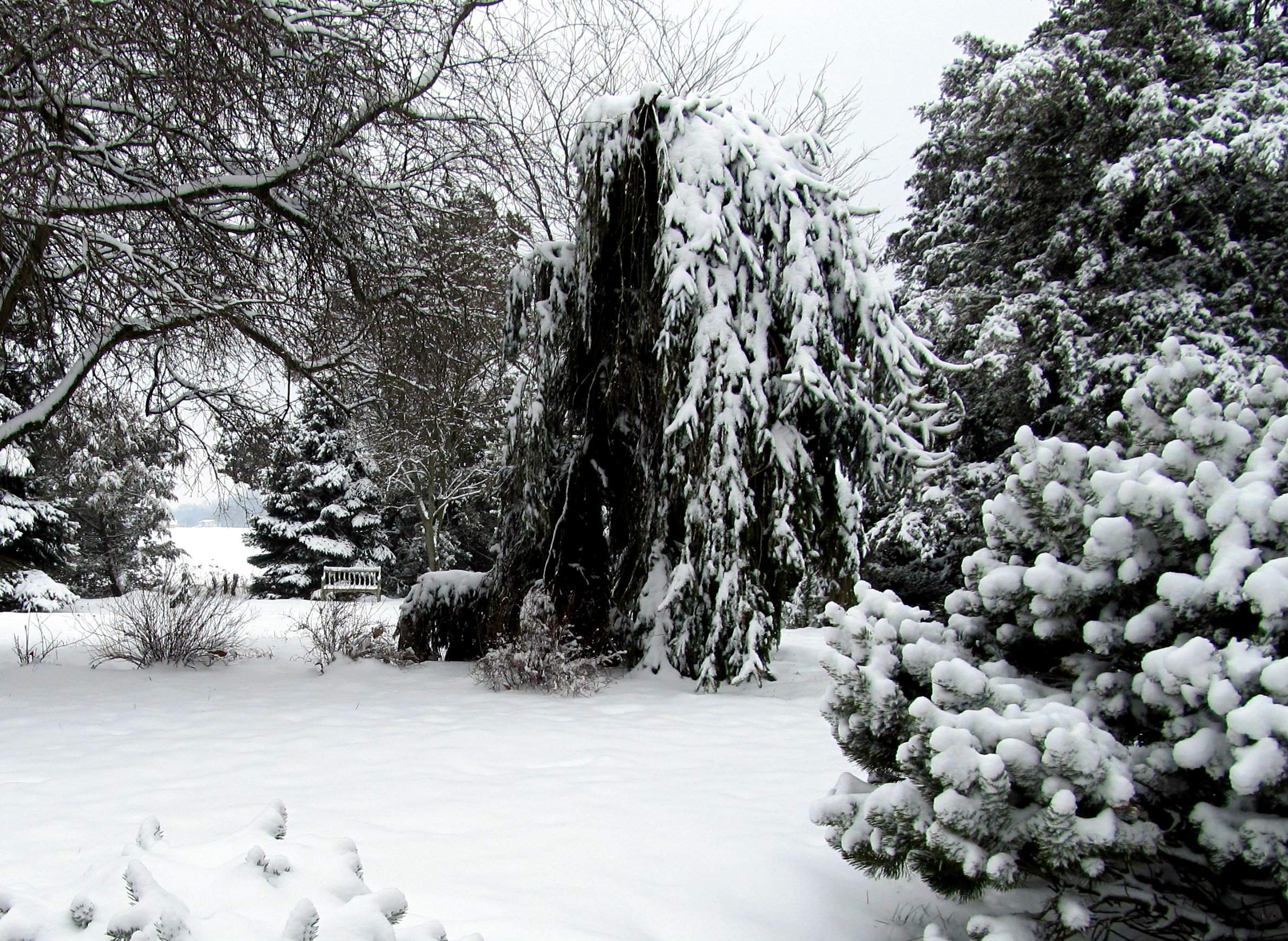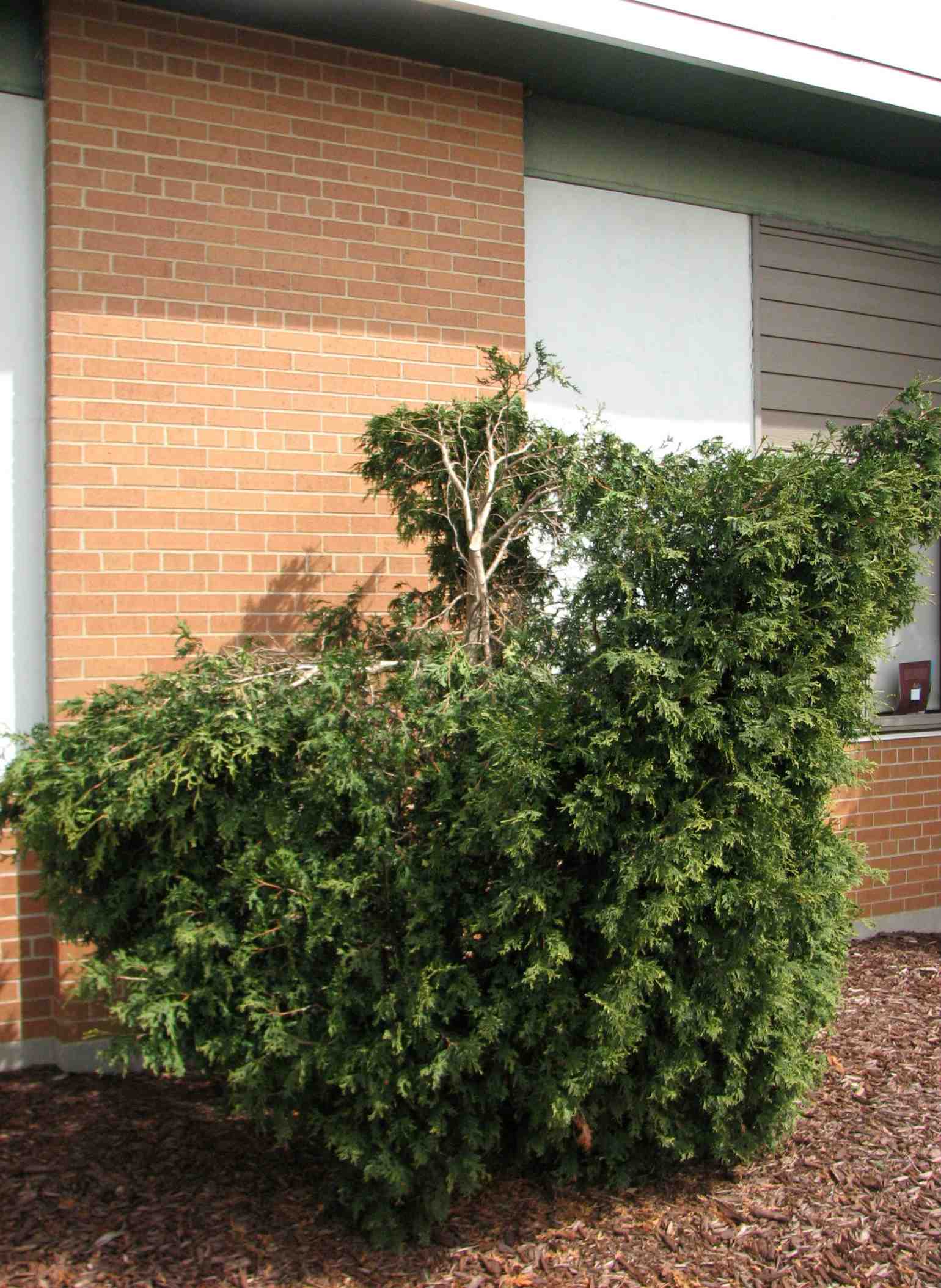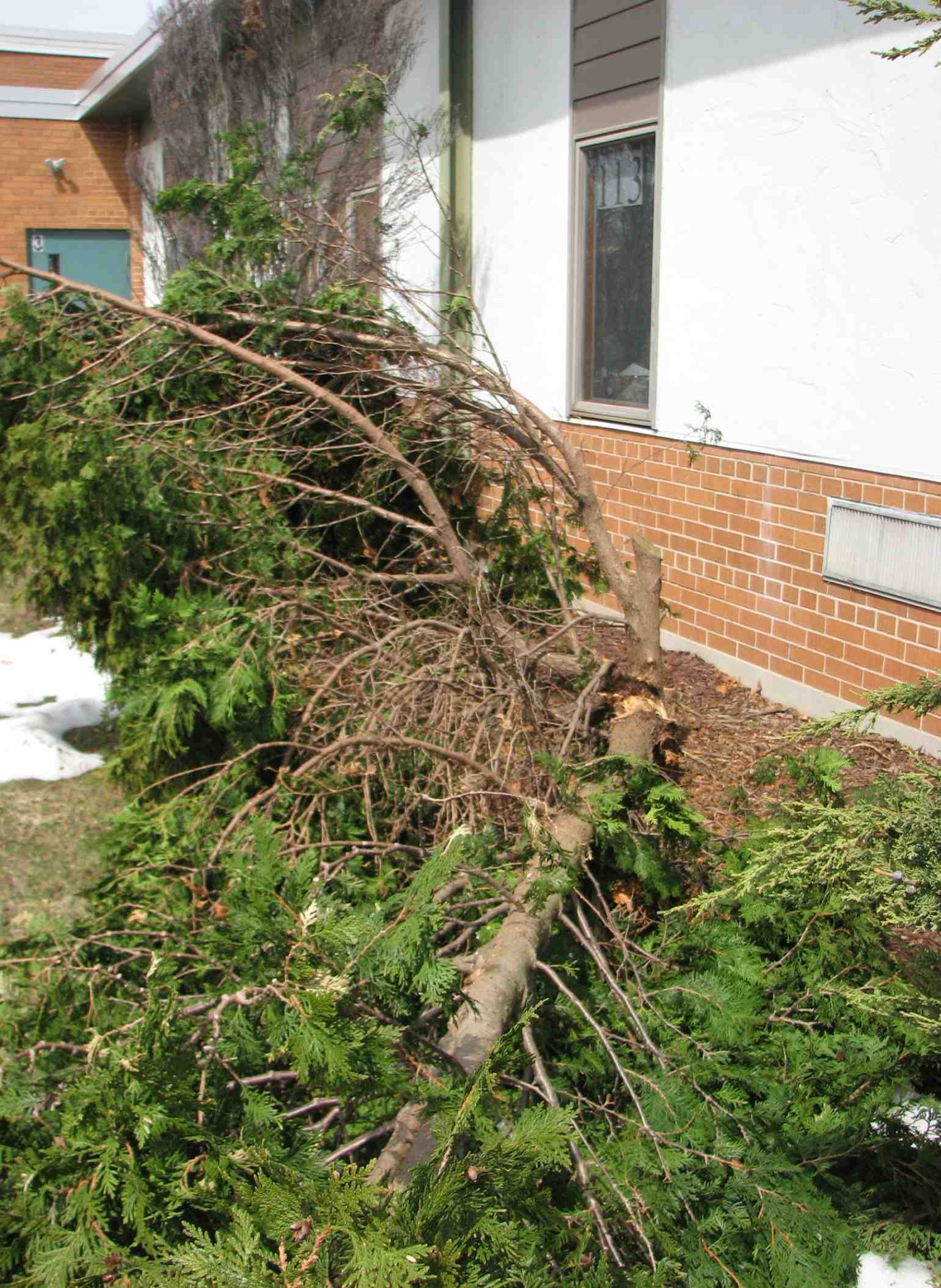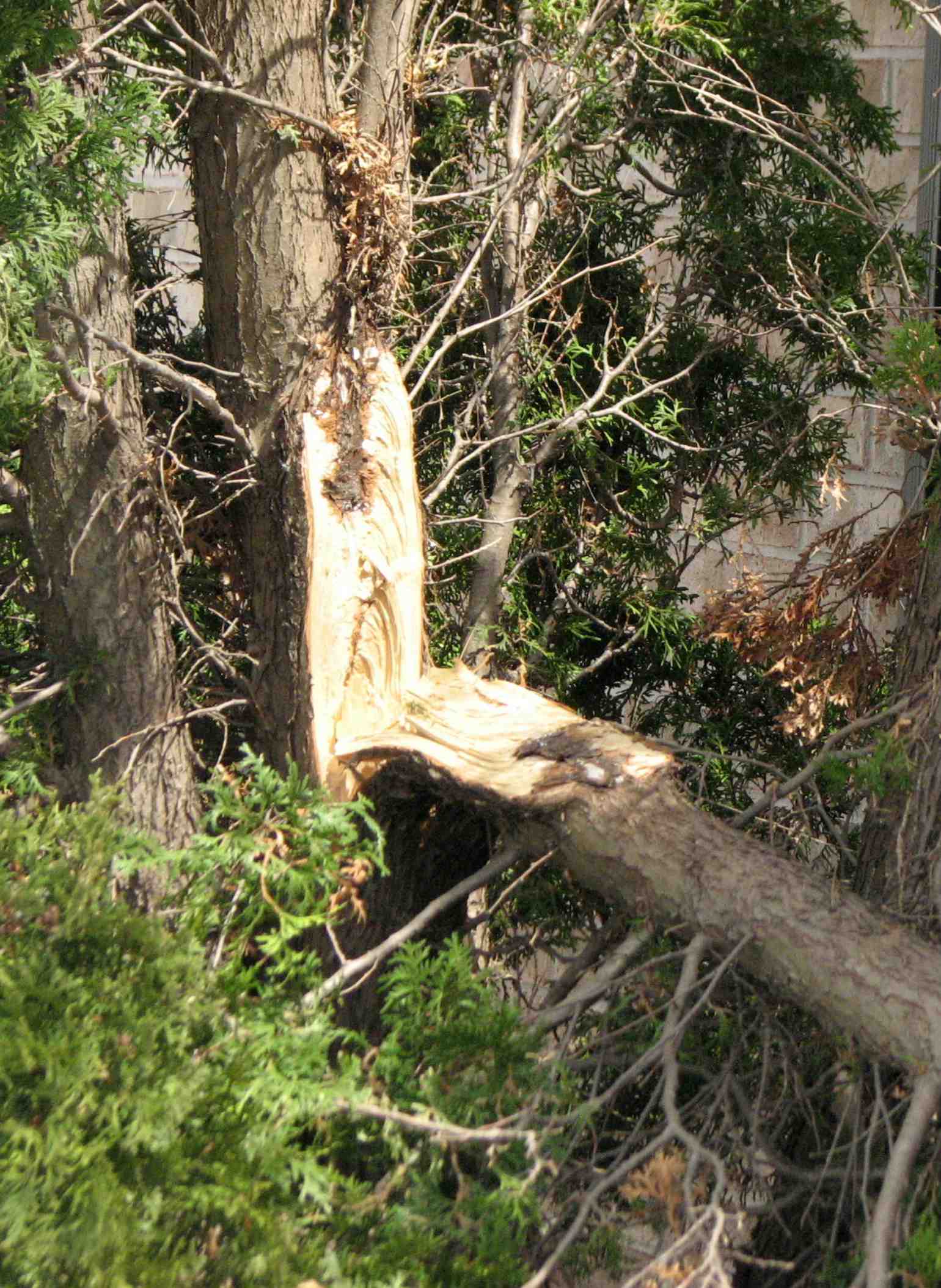
Helping Arborvitae And Other Evergreens Shake Off The Weight Of Snow

Heavy, wet snows can wreak havoc on many trees, particularly certain types of evergreens. Under a heavy load of snow, upright and columnar arborvitaes (Thuja spp.) and other conifers like junipers (Juniperus spp.) are vulnerable to bent branches, which can cause inner branches to snap at their middle or base. Too much snow can even bend the entire plant. Repairing a damaged arborvitae requires some experience and lot of patience to restore the plant back to its original structure.
Bent branches can be tied together using chain lock straps or any flat straps. Depending on the height of the plant, the branches should be tied together at multiple intervals for strong support. However, the straps for should not be left in place for more than two seasons, as they can girdle bark over time.
Young arborvitaes or junipers that are leaning can be straightened by fastening the tree's central leader, or main stem, to a stake using a wide canvas strap. The tree should remain staked for at least one full season. However, if the tree is flattened to the ground, it may have substantial damage at its base that prevents straightening.
If the central leader of an upright arborvitae tree has broken branches with torn bark, the leader can be topped by cutting away the branches above the damaged bark. Topped arborvitae, though, can be unsightly in appearance, vulnerable to more snow load damage and can take a long time to develop a new leader to fill the void. Extensive damage may require removal of the entire tree.
Branches that have snapped at the base should be carefully pruned beneath the damaged area. A clean, sharp cut is necessary for the wound to seal faster, but the tree may take a while to fill the void spot. If more than half of a tree has broken branches at its base, then it is best to remove the entire tree.
Broken branches with torn bark should be examined carefully before any pruning is attempted. Hasty pruning can further tear bark and cause irreparable damage; branches with torn bark are highly vulnerable to decay issues that can weaken their structural stability. It's best to remove damaged branches or to prune beneath damaged tissue. A professional arborist can help strategically prune torn branches.
It isn't just snow that threatens landscape trees like arborvitae. Heavy winds and rainstorms can damage or destroy many types of trees, and is often related to issues like decay or root problems.
Vijai Pandian is a horticultural agent and educator for the University of Wisconsin-Extension Brown County. This article is adapted from an item originally published by the Green Bay Press Gazette.





